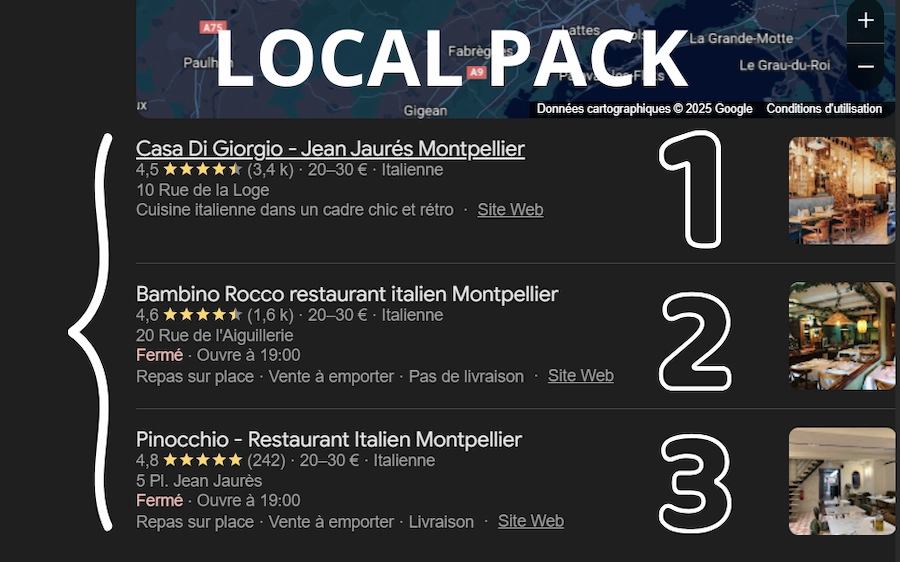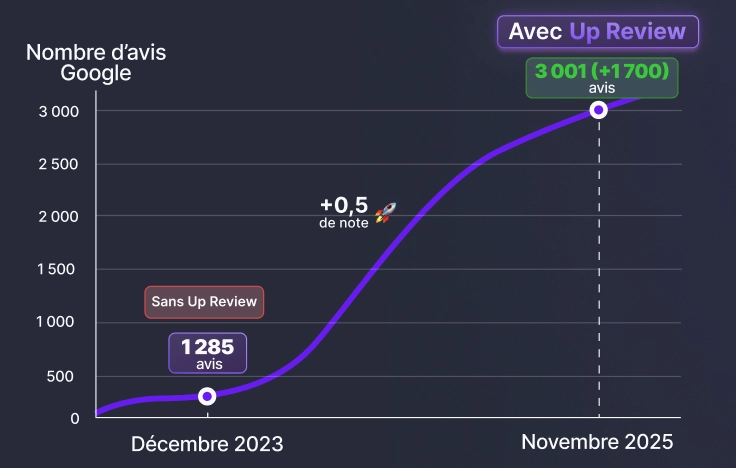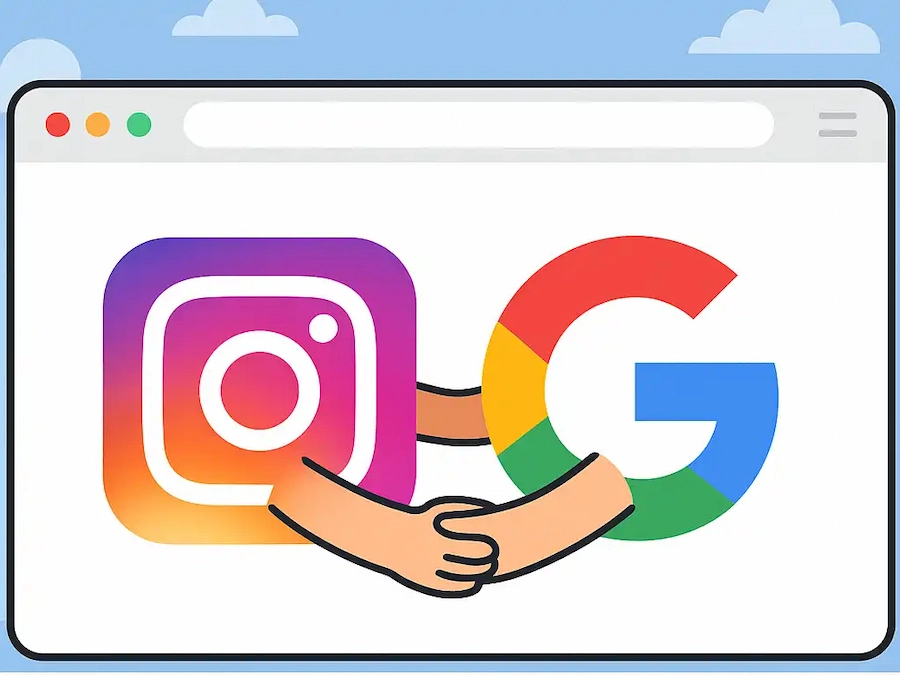“In 2025, 46% of all Google searches are local.” - HookAgency
And while you’re busy in the kitchen, your future customers are searching for things like “best downtown restaurant,” “brunch near me,” or “patio open today.”
Within ten seconds, they make a choice…
And most of the time, they pick your competitor — simply because they show up before you on Google.
This ultimate guide to local SEO shows you, without the jargon, how to regain control over your restaurant’s visibility.
Local SEO is a branch of SEO (search engine optimization) that helps a local business appear in search results when users look for a service + a location, for example: “pizzeria Lille,” “patio Bordeaux,” “sushi Paris 11.”
Your goal (and your competitors’) is to rank first, or at least appear in the top three results Google displays after the search, inside the Local Pack (the Top 3 on Google Maps).
Example of the Local Pack / Snack Pack for the search “Italian restaurant Montpellier”

Local SEO is based on a ranking system built by Google using many factors — but mainly your Google Business Profile, your website, and your overall online authority.
“88% of consumers who perform a local search on their smartphone visit or call a business within the same day.” - SeoProfy
Your future customers no longer choose a restaurant on a whim, they choose it on Google.
Before walking through your door, they check your Google Business Profile, your average rating, and your most recent reviews.
Some don’t even look at your website anymore : a bad rating, incorrect opening hours, or an incomplete profile is enough to make them leave.
Even if you make the best pizza in town, if customers can’t find you, your competitor gets the reservation.
👉 Improving your local SEO means winning the battle before the service even starts.

“80% of local searches result in a conversion (purchase or visit).” - WebFX
In other words: when someone searches for a restaurant near them, eight times out of ten they end up calling, booking, or coming in to eat.
And if they don’t find you?
They’ll simply go to the restaurant that appears before you on Google Maps.
The Call, Directions, and Reserve buttons on your Google Business Profile turn a simple search into an immediate action.
➡️ On average, a well-optimized profile generates 35% more clicks to the website and 42% more direction requests (Google Business Insights).
Google already gives you this storefront, you just need to make the most of it.
Local SEO is an investment, not an expense.
Once your profile and your website are optimized, you remain visible without paying per click, unlike ads.
You publish something ? It stays.
Your competitors stop running ads ? You stay ahead.
➡️ Local SEO keeps working for you even when your restaurant is closed.
You control your image, your displayed menu and pricing, and your online reputation by applying the right practices — often better than your competitors.
The secret to profitable local SEO is consistency.
One post per week, frequent reviews, and up-to-date photos are enough to show Google that your restaurant is active.
➡️ This creates a snowball effect : the more visible you are, the more reviews you get, and the higher you rank.

“56% of Google Business Profile interactions lead to website visits, 24% to phone calls, and 20% to brand searches.” - Synup
Your Google My Business listing (now called Google Business Profile) is the cornerstone of local SEO !
A complete Google Business Profile helps the search engine rank you correctly and increases conversions — people immediately find the information they need.
👉 Need help ? Create your Google Business Profile in 5 minutes.
From the moment you create your account, it’s essential to fill out every field accurately :
Tip : Even though it can boost rankings, avoid stuffing keywords into your business name (e.g., “Italian restaurant Montpellier”).
Why ? It’s against Google’s rules, and if a competitor reports you, your listing or your title can be removed.
Creating your profile is a good start.
But optimizing it is what truly makes the difference.
Here are the key elements to work on :
👉 Discover how to optimize your Google My Business profile in 15 steps.

Your website is your menu in the eyes of Google. If you want to rank at the top, apply the right SEO best practices: a fast, clear, and well-structured site. And remember: Google is the one grading you — so you might as well aim for a perfect score.
Here are the essentials your restaurant website must include :
A fast website improves your search ranking and keeps visitors on your site.
If a page takes more than three seconds to load, you lose a large number of potential customers because they simply leave.
Measure your speed and fix issues using PageSpeed Insights.
Examples : “Lebanese restaurant in Lille”
It’s essential to include your keywords and your location on your website.
If not on the homepage, then create a dedicated page featuring your city or district.
Link together pages that cover related topics.
Example: your brunch menu linking to a blog post about the best brunch spots in Montpellier.
This strengthens your topical relevance, something Google loves.
“Restaurant pages with structured local information generate 33% more clicks.”- Google Search Central, 2024

Include your Google Maps location on your website — either on your Contact page or in the footer.
This is essential because it lets visitors click directly and open your location in Google Maps to get directions.
It also strengthens the connection between your Google Maps listing and your website — everything Google needs to fall in love with your restaurant!

Online directories strengthen your restaurant’s credibility in Google’s eyes by confirming your business information and ensuring consistency across the web.
It’s essential to register your restaurant on these platforms to increase your local visibility. Some of the most effective ones include :
👉 Discover the 35 best platforms to list your restaurant
Golden rule : Maintain perfect consistency across all your listings, especially your NAP (Name, Address, Phone number, opening hours).
“63% of consumers said incorrect information (address, phone number) would stop them from choosing a business.” - OnTheMap
These platforms create what are called “local citations”: the repetition of your business information (NAP) across multiple websites reinforces your restaurant’s legitimacy.
They also provide inbound links (backlinks) to your website from domains trusted by Google, further strengthening your local SEO.

“82% of consumers check online reviews before visiting a restaurant.” - Onyx8Agency
Customer reviews are the real battleground today !
More positive and recent reviews = a higher average rating = more trust from Google and potential customers = better local ranking.
A Simple Routine :
👉 Discover how Up Review enables AI-powered automatic replies and helps you manage all your customer reviews.

Professional Instagram accounts can now appear in Google search results. Your carousels and Reels can capture local search intent, a new entry point for strengthening your local SEO.
It’s a powerful opportunity you should implement before your competitors do.
Quick Instagram Recipe :
Many restaurant owners overlook Apple, yet Apple Business Connect powers Apple Maps, Siri, and Spotlight.
To optimize your restaurant’s local SEO on Apple :
It’s free and fast. Bing Places lists your restaurant across the Microsoft ecosystem (Bing/Edge, Windows, Copilot).
Import your optimized Google Business Profile and sync both listings.
Bing Places is another channel to capture customers who search outside of Google.
Very few competitors use it, which is exactly where you can gain an advantage !

Each week, measure what makes the phone ring and analyze :

Google has recently updated how the “Order” button works on business profiles.
This button can now redirect to :
Choose the right button based on your activity and goals !
If you offer online ordering (takeout or delivery), enable the food ordering integration (takeout_dining) via :
If you don’t take orders, prioritize :

A store locator is an interactive map on your website that lists all your restaurant locations.
It helps customers easily find the nearest restaurant, and it helps Google understand your local presence.
To build it effectively :
A well-configured store locator significantly improves multi-city visibility !

Up Review helps restaurant owners appear at the top of Google and generate more reservations thanks to simple and effective tools.
Up Review turns your restaurant into the #1 spot in your city !
👉 Request a demo of the Up Review solution
Your restaurant’s local SEO relies on a simple strategy :
It’s the set of actions that helps your restaurant appear in the top results on Google and Google Maps for local searches (e.g., “pizzeria Lille,” “brunch Bordeaux”).
Create or complete your Google Business Profile, fill in all your information, add photos and your menu, collect and respond to reviews, publish regularly, optimize your website with local keywords, and register on directories (Tripadvisor, Yelp, Yellow Pages).
Fill out everything: categories, clear description, opening hours, photos, menu, attributes.
Activate action buttons (Call, Reserve, Directions) and publish a Google Post every week.
Ask for a review at the right moment (end of the meal, via QR code, contest, email, or SMS) and make the process easy.
Up Review’s prize-wheel contests help generate more authentic Google reviews.
Yes. A fast, well-structured site with your keywords + city, a Google Maps embed, and optimized local pages improves your ranking on Google Maps and in search results.
Check NAP consistency (Name, Address, Phone) on all your listings, publish one post per week, add a local page, respond quickly to reviews, reduce image sizes, and analyze competitors to outperform them.
Yes. They strengthen the credibility of your information for Google and provide inbound links (backlinks) from trusted websites, which improves your local visibility.
Better local SEO leads to more clicks, calls, bookings, and customers — without relying on advertising spend.
Nathanaël Butet, for the Up Review team ❤️
Receive directly in your inbox the best tips to manage your business and generate more revenue!